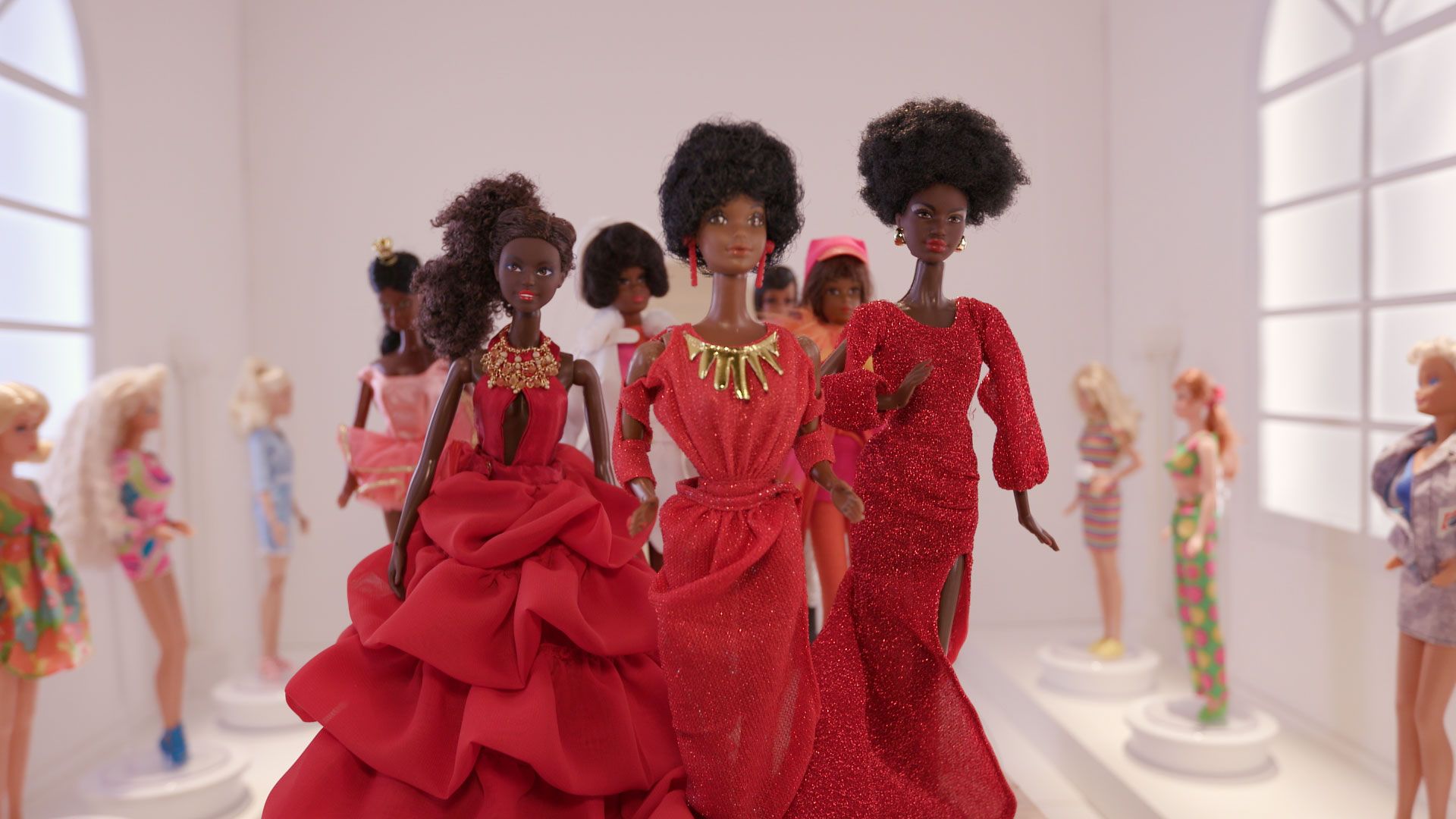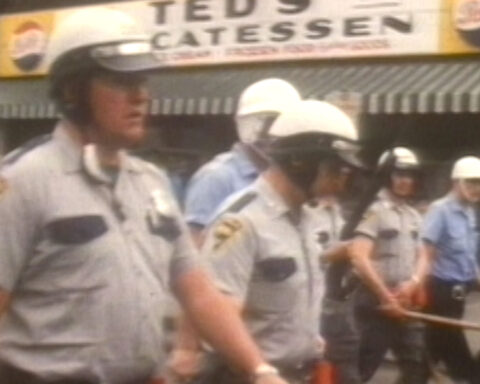Black Barbie: A Documentary
(USA, 100 min.)
Dir. Lagueria Davis
Life in plastic may seem fantastic, but generations of kids who played with Barbie had a devastating tool in their hands. Black Barbie: A Documentary looks at the inadvertent racism of one of the world’s most beloved toys. For young kids who didn’t experience a flicker of recognition in Barbie’s hyper-femininity, the doll could be a source of shame. Even worse, it could be a vehicle for internalized racism, if the child playing with Barbie felt the doll’s looks—unnaturally long legs and breasts big enough to nearly topple one over—as beyond reach. Someone as a simple as a toy can have grave consequences as it shapes young minds.
Director Lagueria Davis, who admits from the outset that she’s not a big fan of dolls, tackles Barbie’s tumultuous journey with race relations. She has an extraordinary access point to the Barbie tale. When Davis asks her aunt, Beulah Mae Mitchell, why she hordes so many dolls—including many Black ones—Mitchell credits her 45 years of service with Mattel. She has boxes upon boxes of them–a history of racism told through dolls as early Black dolls often put grotesque caricatures in kids’ hands. It’s telling about the larger implications of the story that nobody has tackled the Black Barbie saga before. As Mitchell shares her history with Mattel, which includes work on the assembly line and later positions as a receptionist, she notes that Black faces were few at the company.
However, Mitchell is pragmatic in her assessment. She explains how Barbie’s creator, Ruth Handler, simply envisioned a doll for her daughter to play with. But Beulah says that the Handlers were receptive to feedback: They just hadn’t considered the Black market.
Making Black Barbie
Black Barbie playfully recounts the strange genesis of the titular toy. A Black doll named Barbie didn’t hit the shelves until 1980—21 years after the original bikini-clad Barbie debuted. Before then, Mattel offered a Black doll named Christie—Barbie’s friend and babysitter. One of the talking heads in the film’s colourful interview suites notes that Christie, let’s face it, couldn’t be both. Mattel just couldn’t go all in and make a Black doll on equal footing as Barbie. While Mattel struggled, competitors like the Black-owned Shinanda toys made dolls for kids of all races.
Davis gets lots of time with Kitty Black Perkins, the designer who ultimately created the first Black Barbie. Perkins tells how she endeavoured to create a doll with style and personality. Rather than early efforts that basically just darkened the plastic and moulded a Black-ish doll with white features, early efforts didn’t really let anyone recognize themselves in the dolls. Instead, Perkins explains how she widened Barbie’s nose and gave her a natural hairstyle, along with vibrantly coloured clothes inspired by Diana Ross.
Even though the original Black Barbie checks all the boxes about what participants in the film hope to see in Barbie, Perkins admits that the doll didn’t get much love from Mattel. The marketing push just wasn’t there. Davis, meanwhile, offers a title card that offers Mattel’s response to a request for materials. They couldn’t send any marketing materials for Black Barbie because they didn’t have any. Even after investing in a toy for Black children, the manufacturer didn’t give the Black market full consideration.
The Doll Tests
Mattel doesn’t let the white guy who took over Black Barbie’s design speak to her loss of personality, either. The toy company only lets Davis chat with diversity, equity, and inclusion executive Mason Williams. The executive’s cringe-worthy interview speaks volumes: It’s always painful to watch a person of colour put in the position of creating positive spin on flawed efforts to correct systemic racism. Even today, when Mattel trucks out Barbie movies with a Black character, or Malibu Barbie shows how to be an ally in a well-intentioned vlog on Black Lives Matter, Black Barbie struggles to be more than a sidekick.
Davis asks how treating Black Barbie as an afterthought perpetuates the sense of inadequacy inspired by white Barbie. With the aid of Dr. Patricia Turner from UCLA, Davis revisits the “Clark doll test” in which Kenneth and Mamie Clark presented Black children with a white doll and a brown doll. They asked kids questions about social traits, who was the “good” doll or the “bad” doll, and eventually, which doll most resembled them. In an archival reel, Dr. Clark says the kids’ deflated recognition of themselves in his queries proved downright unsettling. Dr. Turner, moreover, cites the doll test as a pivotal piece of evidence in the case of Brown v. Board of Education. Capturing a child’s lowered sense of worth through a plaything helped break segregated schooling.
Black Barbie replicates the doll test as Davis invites a family therapist to test a spectrum of Barbies with a racially diverse group of children. The kids say that it’s fine for a Black kid to play with a white Barbie and vice versa. However, they unanimously consider Malibu Barbie as the “real” Barbie. Generations after Black Barbie’s conception, they still equate Barbie with idealized white femininity.
Competing Agendas and Too Many Cooks
Moreover, the kids seem awkward discussing race, but are well-versed in conversations about racism. The film grasps this flaw in America’s education system: kids learn to recognize inequality, but aren’t taught how to understand a verisimilitude of experiences in order to get beyond the practices that “isms” bring.
While Black Barbie makes shrewd observations about the racial and cultural currents embedded within capitalist practices, it somewhat loses the thread as it moves to a round-table discussion of the revised doll test. The film exhibits symptoms of having too many cooks in the kitchen. Black Barbie is sharp, joyous cultural commentary when Davis keeps her focus trained on Beulah Mae Mitchell, Kitty Black Perkins, and other related parties discussing the doll’s genesis. But once it expands the circle to peripheral talking heads that range from actress Gabourey Sidibe (who’s actually a highlight of the film) to “public historians” designers, and influencer-style people, Black Barbie becomes burdened by competing agendas. People in Black Barbie often use Barbie as a stepping stone toward discussing something else.
That’s fine in conversation, but as a film, it becomes unfocused and far-reaching in its final act. Davis hits many of the same points in fun vignettes in which she grabs some Barbies, stages dioramas, and synthesizes these same ideas in voiceover.
The film has the same challenge that Black Barbie faces: It’s impossible to please everybody. It’s equally impossible to correct a problem as vast as systemic racism with one toy or one film. Davis understand this and she doesn’t try to take everything on. But she uses Barbie to spark that conversation. If dolls inspire such wide-ranging debates among adults, the film implies that there’s no reason we can’t engage children with these questions from an early age.














